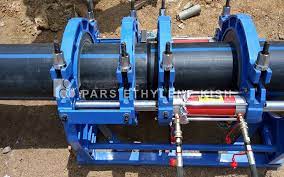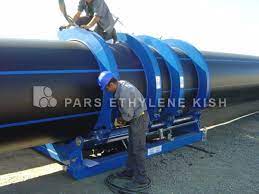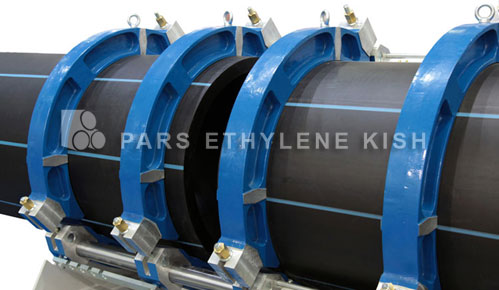Polyethylene pipe joining methods to know
Polyethylene (PE) pipes are an essential component of modern infrastructure, used in a wide range of applications from water supply and gas distribution to industrial piping and beyond.
However, joining PE pipes together requires specialized knowledge and techniques to ensure a safe and reliable joint. In this age of innovation, there are various joining methods available, each with its own unique advantages and challenges.
In this regard, exploring the world of polyethylene pipe joining methods can be an exciting journey of discovery, innovation, and creativity.

Polyethylene pipe joining methods
Polyethylene (PE) pipes can be joined together using various methods, including:
-
Butt fusion: This method involves heating the ends of two PE pipes and then joining them together using a fusion machine. The ends are melted and fused together under pressure, resulting in a strong and permanent joint.
-
Electrofusion: Electrofusion involves using a special fitting with built-in heating elements to join two PE pipes. The fitting is connected to a control unit that heats the elements, melting the pipe ends and fusing them together.
-
Compression fittings: Compression fittings are a quick and easy way to join PE pipes. The fitting consists of a nut, a ring, and a compression sleeve. The sleeve is placed over the pipe, followed by the ring and nut. As the nut is tightened, the sleeve compresses around the pipe, creating a tight and secure joint.
-
Mechanical fittings: Mechanical fittings are similar to compression fittings, but they use a mechanical clamping mechanism instead of compression. The fitting is placed over the pipe and tightened using a wrench, creating a tight and secure joint.
It is important to choose the appropriate joining method for the specific application and ensure that all necessary precautions and procedures are followed to ensure a safe and reliable joint.
Which Polyethylene pipe joining method is the best?
The choice of the best polyethylene (PE) pipe joining method depends on several factors, including the application, pipe size, pressure requirements, and environmental conditions. Each joining method has its own advantages and disadvantages, and the best method is determined by considering these factors.
Butt fusion is generally considered the most reliable and durable joining method for PE pipes, providing a strong and permanent joint. However, it requires specialized equipment and skilled operators, making it more expensive and time-consuming than other methods. Electrofusion is also a reliable joining method, especially for smaller pipe sizes, and can be faster and more cost-effective than butt fusion for certain applications.
Compression fittings and mechanical fittings are often used for smaller-diameter pipes and lower-pressure applications. They are relatively quick and easy to install and do not require specialized equipment or skilled labor, making them more cost-effective than fusion methods. However, they may not be suitable for high-pressure applications or extreme environmental conditions.
In summary, there is no one-size-fits-all answer to which PE pipe joining method is the best. The choice of the method depends on the specific requirements of each application, and a careful evaluation of each option should be made before deciding on the best method.
The cheapest method
Compression fittings are generally considered the cheapest method for joining polyethylene (PE) pipes. They are quick and easy to install and do not require specialized equipment or skilled labor. Compression fittings consist of a nut, a ring, and a compression sleeve, which are readily available and affordable.
However, it is important to note that compression fittings may not be suitable for high-pressure applications or extreme environmental conditions, and they may require periodic maintenance to ensure proper functioning. Additionally, for larger-diameter pipes, the cost of compression fittings may increase significantly.
Therefore, while compression fittings may be the cheapest option for some applications, it is important to carefully evaluate all joining methods and consider the long-term cost and reliability of each option before making a decision.

What do we recommend?
The best joining method for polyethylene (PE) pipes depends on several factors, including the application, pipe size, pressure requirements, and environmental conditions.
It is important to evaluate each joining method based on these factors and consider the long-term cost and reliability of each option before making a decision. Consulting with a qualified engineer or a professional with expertise in polyethylene piping systems can also help in selecting the best joining method for your specific application.
Pars ethylene-kish The best choice you can make
Welcome to pars ethylene-kish, where innovation meets reliability! At our factory, we take great pride in producing top-quality pipes that meet the highest industry standards.
From our state-of-the-art manufacturing processes to our strict quality control procedures, we ensure that every pipe that leaves our facility is durable, efficient, and safe.
Our team of experts is dedicated to developing new and innovative products that meet the evolving needs of our customers, while also prioritizing sustainability and environmental responsibility.
With our commitment to excellence and customer satisfaction, we are confident that our pipes will serve as the foundation for successful projects and a better future.

Final Thoughts on Polyethylene pipe joining methods
Polyethylene (PE) pipes are widely used in various industries and applications, and selecting the appropriate joining method is critical to ensure a safe and reliable piping system. The choice of the best joining method depends on several factors, including the application, pipe size, pressure requirements, and environmental conditions.
It is important to evaluate each joining method based on these factors and consider the long-term cost and reliability of each option before making a decision. Seeking advice from a qualified engineer or a professional with expertise in polyethylene piping systems can also help in selecting the best joining method for your specific application.
Regardless of the joining method selected, it is essential to follow proper procedures and precautions during installation to ensure a safe and durable piping system. Regular maintenance and inspection of the piping system can also help to detect and address any potential issues before they become a problem.
If you liked this post let us know in the comment section, till next time.